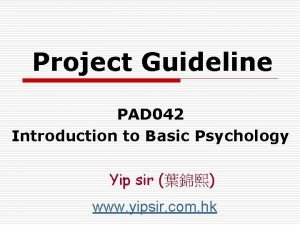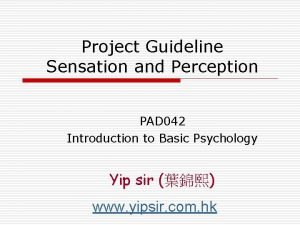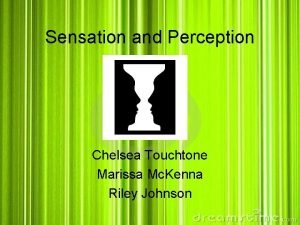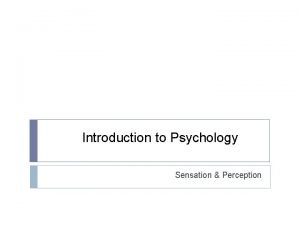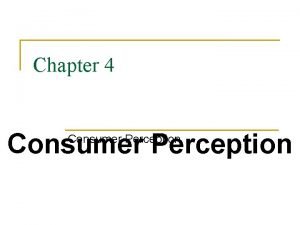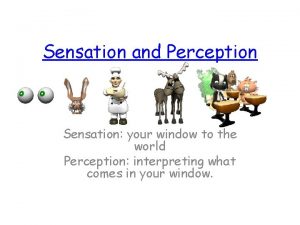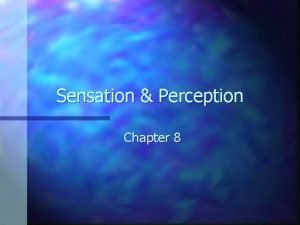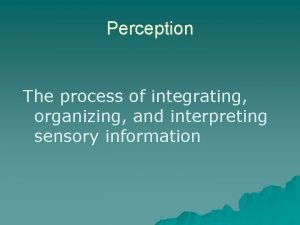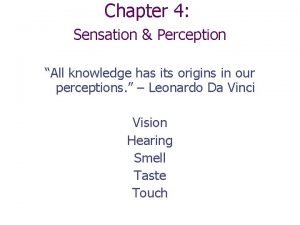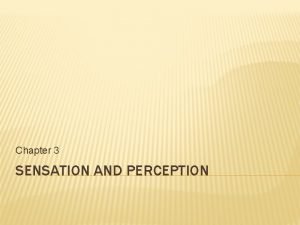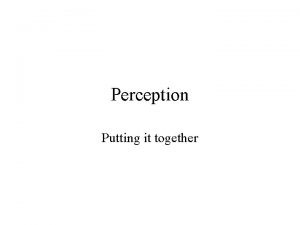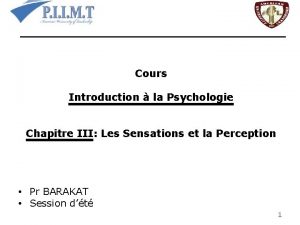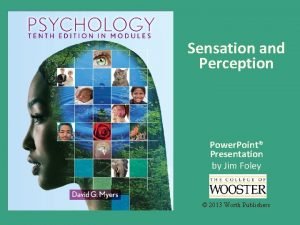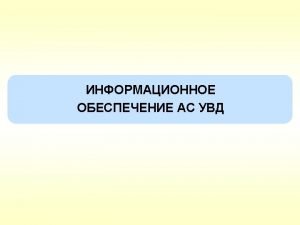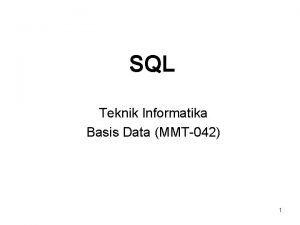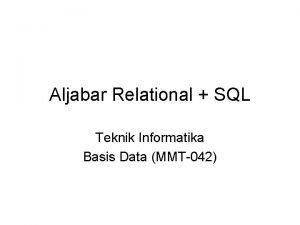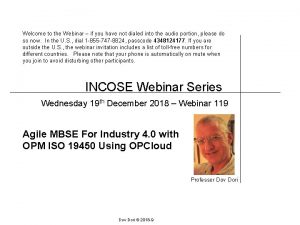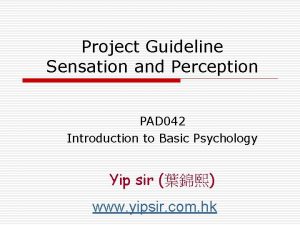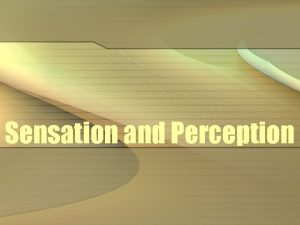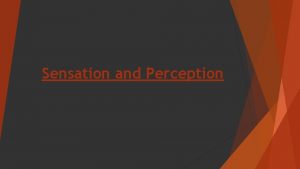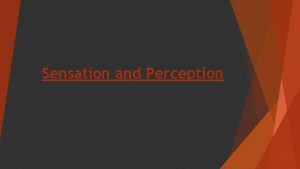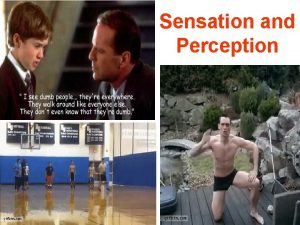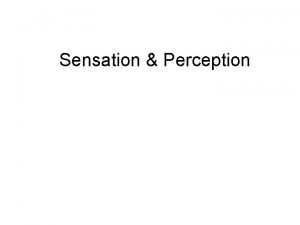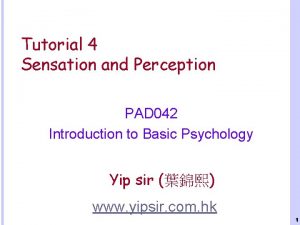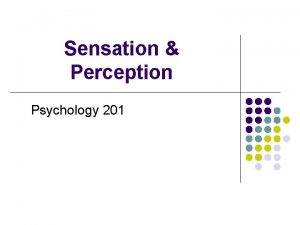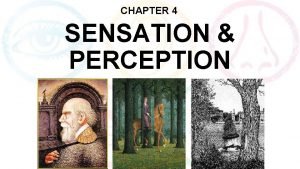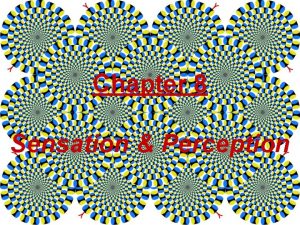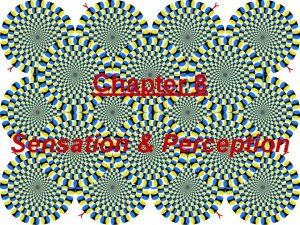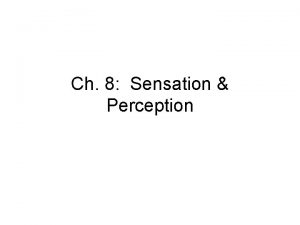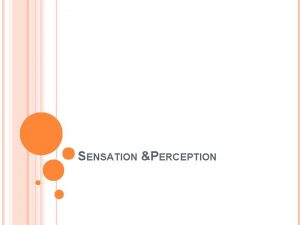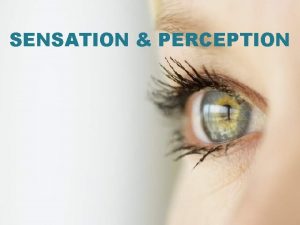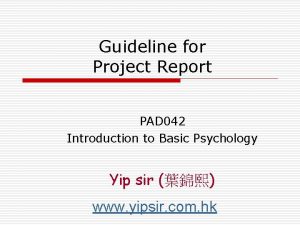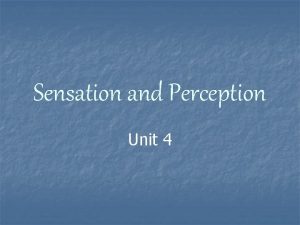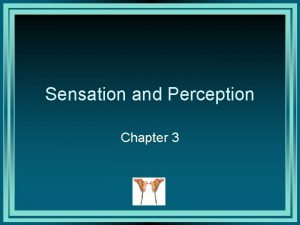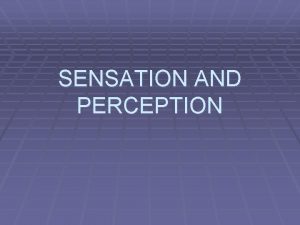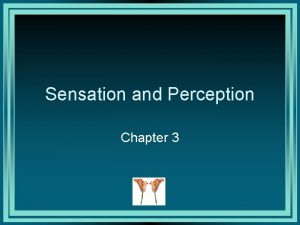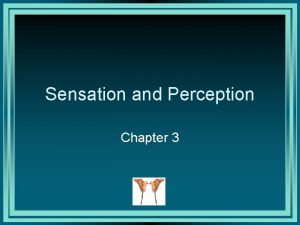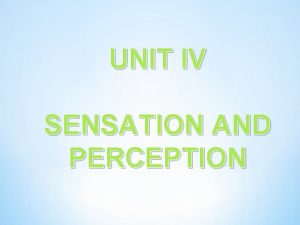Project Guideline Sensation and Perception PAD 042 Introduction




























- Slides: 28

Project Guideline Sensation and Perception PAD 042 Introduction to Basic Psychology Yip sir (葉錦熙) www. yipsir. com. hk

Project (30%) Presentation (15%) + Report (15%) Report Format

Title Page o o The first page should contain the 1) Name of the institution 2) Name of Program (Pre Associate Degree) 3) Full title of the paper 4) Course number (Pre. AD 042) 5) Tutor’s name 6) Student’s name and number 7) Date of submission. The title of the paper is neither underlined nor entirely placed in capitals.

Text of the Paper (1) o o o Do not submit the paper inside a folder. Simply staple the pages together and submit the paper as a loose-leaf manuscript. The paper should be neatly typed on one side only of white, 8. 5 x 11 inches paper (A-4 size). Do not use half sheets or strips of paper glued, taped, or stapled to the pages.

Text of the Paper (2) o o All pages must contain 1 to 1. 5 -inch margins on all sides. Double-space the text, including quotations. Begin each new paragraph by indenting five spaces, type all other lines starting from a uniform left margin. Number pages, including the first, consecutively in the upper right-hand corner of the paper.

Text of the Paper (3) o o Use Times New Roman. Script type and other artistic typefaces are unacceptable. Normal paragraphing must be used throughout the paper. If the paper contains subtitles either centered on the page or aligned with left margin. Underline but do not capitalize subtitles.

Text of the Paper (4) o Strictly observe the length of the paper (around 1000 words in English) and print the number of words at the end of the report.

Citation in text and Reference list

APA format o Citation in the essay n n (sample essay) Research has shown that women of employed mothers were more career oriented and more likely to pursue nontraditional occupations than women whose mothers were homemakers (Almquist, 1974; Angrist, 1972 a; Horner, 1972). In a longitudinal study of college women, Almquist and Angrist (1970) found that career orientated women and atypical choosers revealed that they learned from…. .

APA format n If cross-referencing: o o Individuals are active learners and have an innate need to adapt to the environment (Piaget, 1956, cited in Hanna, 2000). Piaget (1956, cited in Hanna, 2000) suggested that individuals are active learners and have an innate need to adapt to the environment.

APA format o Reference section (inserted by the end of the essay) References: Hanna, S. L. (2000). Person to person: Positive relationships don’t just happen. Upper Side River, NJ: Prentice-Hall Topics. Shaffer, D. (1999). Developmental psychology: Childhood & adolescence (5 th ed. ). California: Brooks/Cole. Author’s last name, Initials. (Date of Publication). Title. (Edition number). Place of Publication: Publisher. (Arranged in alphabetical order)

APA format o o Chinese Book 趙志裕、康螢儀、葉慧敏、李秀麗、符可瑩 (2000)。 《發揮多元才能:從激發動機到取得成就》。香港:三聯書店。 Web references (Stand-alone document, no author identified, no date): GVU’s 8 th WWW user survey. (n. d. ). Retrieved August 8, 2000, from http: //www. cc. gatech/edu/gvu/usersurverys/ Title of the document. (n. d. ). Retrieval date, from URL

Presentation Format The presentation should last for 15 -20 minutes.

Project guideline Presentation + Report Contents

Introduction n What is the topic of your presentation? n How is this topic related to psychology?

Theory n What is the general theory of your group’s topic? ¨ n n n e. g. classical conditioning, operant conditioning, social learning, perceptual organization, etc. ) When is theory discovered? Who discovered this theory? How was this theory discovered?

Topic of Specific Interest: Research/Experiment n Inside this big topic, what is the specific topic that your group is interested in? ¨ n (reinforcement schedules, perceptual organization, observational learning, Carl Rogers’ client-centred approach) Why is your group interested in this specific topic?

n What research and experiments had been done on this specific topic? n What results were found? n Anything interesting to share about this topic?

Application of your topic in daily life n How is this specific topic applied in our daily life? For example: ¨ Effects of reinforcement schedules on our everyday lives. ¨ The relationship between perceptual organization and everyday experiences ¨ Ways to enhance our personal development using the Carl Rogers’ approach. )

Conclusion n What has your group learned in this project? n Has it changed any of your behaviors or views? n If you have to do further research or experiment on this topic, what would you do? How would you do it? (recommendations)

Difference between Sensation and Perception

Sensation 知覺 / 感覺: The process of_____, and transmitting messages from the outside world to the brain. Perception 看法 / 察覺: The process of organizing and ______ information received from the outside world. 22

Sensation: The process of receiving, and transmitting messages from the outside world to the brain. Perception: The process of organizing and interpreting information received from the outside world. 23

What’s the difference between emotion情緒 and feeling感覺? Feeling External stimulus → universal physcial response, e. g. hot, cold, hungry, tired, physical pain. . . Emotion External stimulus → experience association + cognitive appraisal → response, e. g. angry, happy, hostile, sad. . .

Top-down process n The use of preexisting thoughts, motivations, and expectations to apply meaning onto a sensory event. n getting a wrong bus n fried beef noodles and hot lemon coke n meeting a new classmate in the tutorial group

Bottom-up process n Detecting specific elements in visual input and assembling them into a more complex form. n puzzle making n assess the a placement student’s performance

Bottom-up process n Detecting specific elements in visual input and assembling them into a more complex form. n puzzle making n assess the a placement student’s performance

The End
 Pad-042
Pad-042 Pad-042
Pad-042 Chapter 5 sensation and perception
Chapter 5 sensation and perception Principles of visual perception
Principles of visual perception Ap psych sensation and perception
Ap psych sensation and perception Perception in psychology
Perception in psychology Sensation and perception crossword puzzle
Sensation and perception crossword puzzle Chapter 3 sensation and perception
Chapter 3 sensation and perception Sensation and perception
Sensation and perception Chapter 6 sensation and perception
Chapter 6 sensation and perception Copyright
Copyright Consumer perception definition
Consumer perception definition Sensation and perception
Sensation and perception Opponent process theory
Opponent process theory Chapter 6 sensation and perception
Chapter 6 sensation and perception Chapter 6 sensation and perception
Chapter 6 sensation and perception Sensation and perception uu
Sensation and perception uu Chapter 4 sensation and perception
Chapter 4 sensation and perception Chapter 3 sensation and perception
Chapter 3 sensation and perception Perception vs sensation
Perception vs sensation Sensation et perception en psychologie
Sensation et perception en psychologie Perception vs sensation
Perception vs sensation Old woman young woman illusion
Old woman young woman illusion Area code system
Area code system 042-68-4425
042-68-4425 Mmt-042
Mmt-042 Mmt-042
Mmt-042 Tsr-042
Tsr-042 Dori-042
Dori-042
